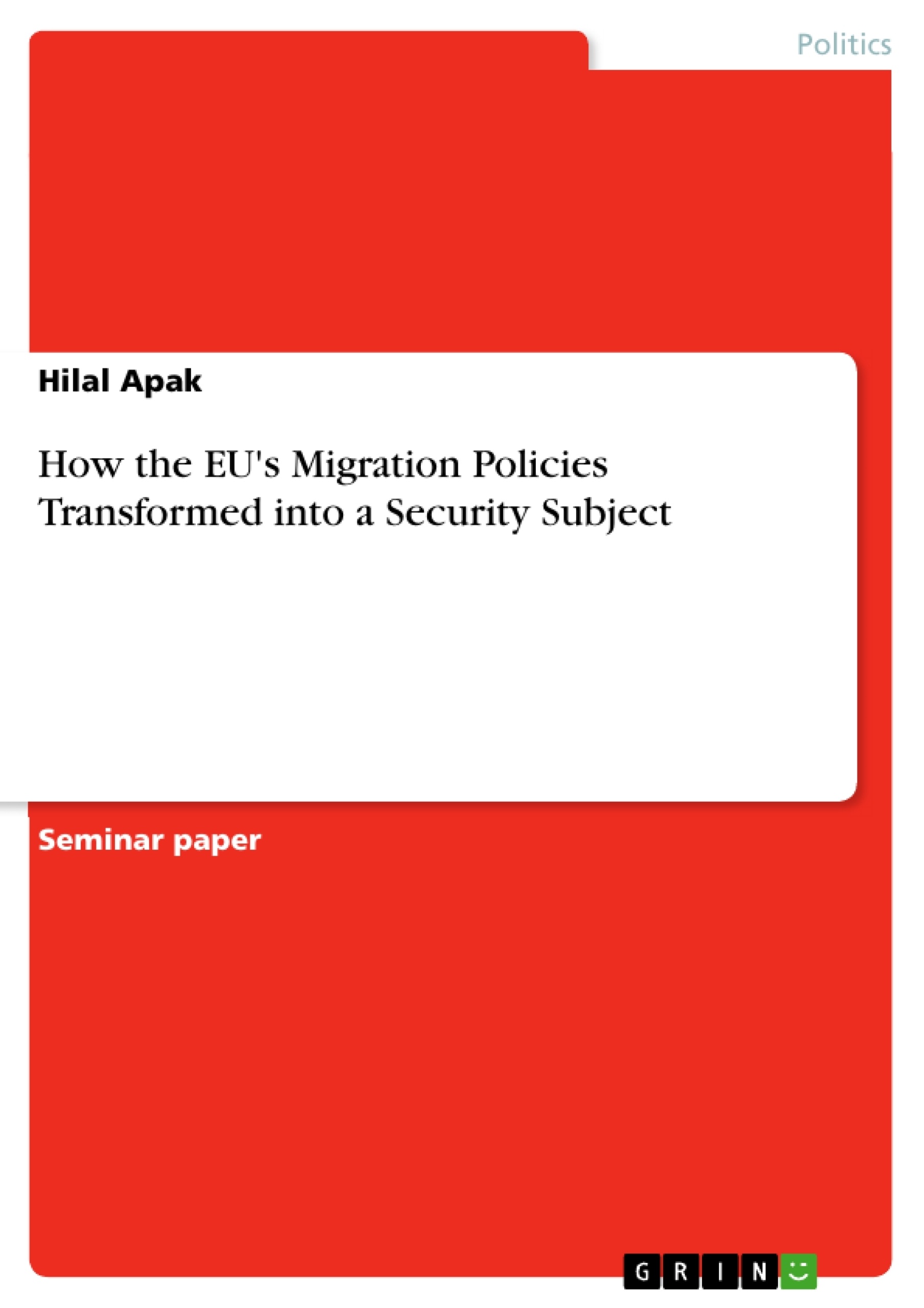The topic of this term paper are the current EU's migration policies. The international immigration movement has been one of the deliberations in the current challenges which shapes the economic, social and political structure of Europe, particularly since the 2015 Refugee Crisis. This challenge has been taking place through the process called "Arab Spring" by the growing migration flows due to political and economic instabilities existing in North African countries.
The aim of this study was to investigate EU migration policy through securitization by using the securitization theory. The research question is the following: "How did the EU's migration policies transform into a security subject?" The term paper aims to answer this question systematically throughout the following sections. Migration is perceived as a "new threat object" that will be analyzed using the theory of securitization.
This paper has been divided into five sections. The first section seeks to examine the changing nature of policy regulations through migration policies.
The second section is the main analytical part. This section theoretically discusses the fundamental structure of securitization and the Copenhagen School. It indicates the impact of extraordinary measures taken by the EU and developments in Europe's ideological map in an effort to explain this theory. It also facilitates the concept of externalization by examining implementations on the border controls.
The third section accentuates the framework for migration as a security object.
The fourth section focuses on securitization of migration by addressing a parallel way of the supranational process. This section emphasizes that the transition of asylum seekers and immigrants across the Schengen border makes the coherent cooperation of the EU institutions and the member states necessary. Besides, immigation has become a fundamental property both at the national level and also the European Union level. So most importantly, it has been transformed into a subject of "high politics".
Finally, the conclusion provides a summary of the results of the analysis undertaken in the other sections, and the research question will be answered.
Inhaltsverzeichnis (Table of Contents)
- I. Introduction
- II. Evolution of the EU's Migration Policies
- III. Securitization of Migration
Zielsetzung und Themenschwerpunkte (Objectives and Key Themes)
This term paper investigates the EU's migration policies through the lens of securitization theory. It aims to answer the question of how these policies have transformed into a security subject. The research explores the changing nature of migration policies, the theoretical framework of securitization, and the practical implications of securitization for migration management within the EU.
- The evolution of EU migration policies from historical perspectives, including key agreements and treaties.
- The concept of securitization and its application to the study of migration policies.
- The impact of securitization on EU migration management, including the development of border controls and cooperation mechanisms.
- The political, economic, and social implications of securitization for migrants and EU member states.
- The role of supranational institutions and member states in shaping and implementing securitization policies.
Zusammenfassung der Kapitel (Chapter Summaries)
- The introduction provides an overview of the research topic, the research question, and the structure of the term paper. It highlights the significance of migration as a contemporary challenge and introduces the concept of securitization as a framework for analysis.
- The second chapter explores the historical evolution of EU migration policies. It traces the development of policies from the early stages of the European Economic Community (EEC) to the present, highlighting key agreements such as the Schengen Agreement and the Dublin Convention.
Schlüsselwörter (Keywords)
The main keywords and focus topics of this term paper include: EU migration policy, securitization, securitization theory, Copenhagen School, Schengen Agreement, Dublin Convention, asylum, immigration, border control, externalization, supranational institutions, member states, high politics.
- Citation du texte
- Hilal Apak (Auteur), 2019, How the EU's Migration Policies Transformed into a Security Subject, Munich, GRIN Verlag, https://www.grin.com/document/470019



